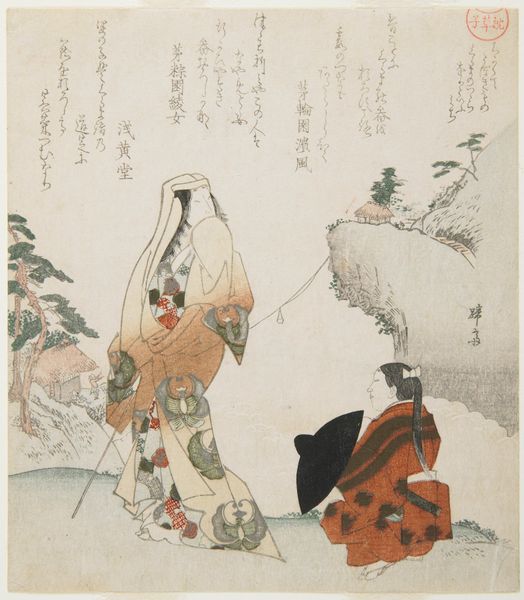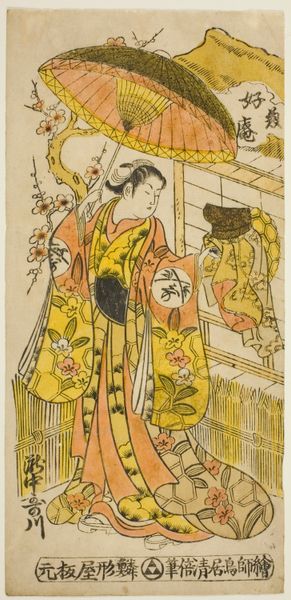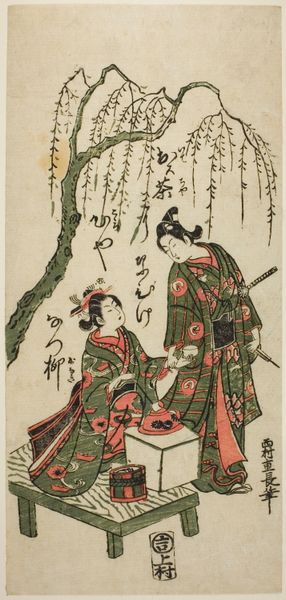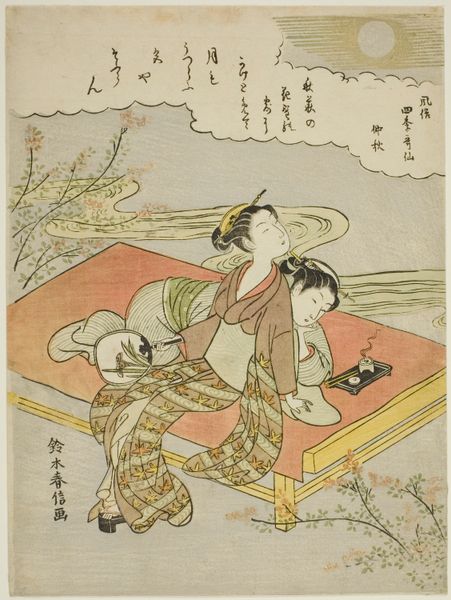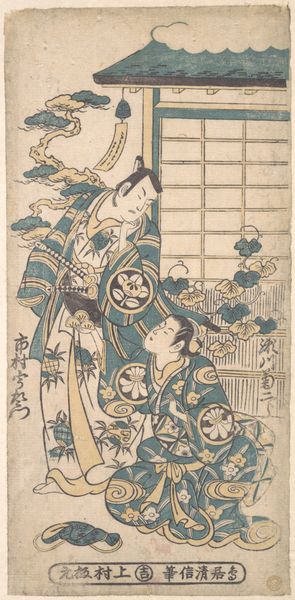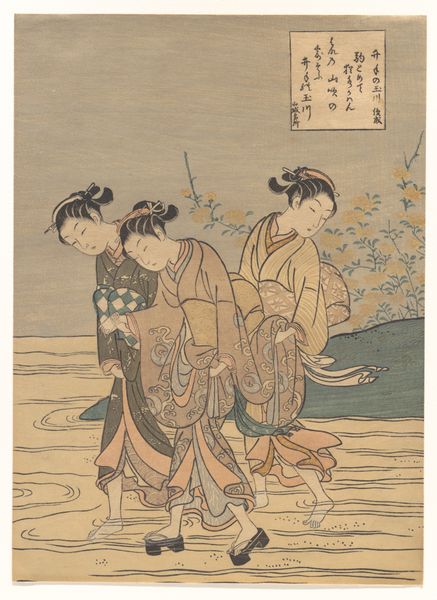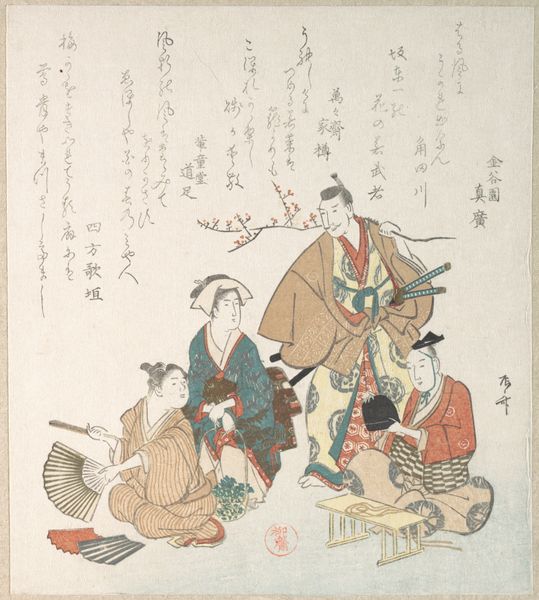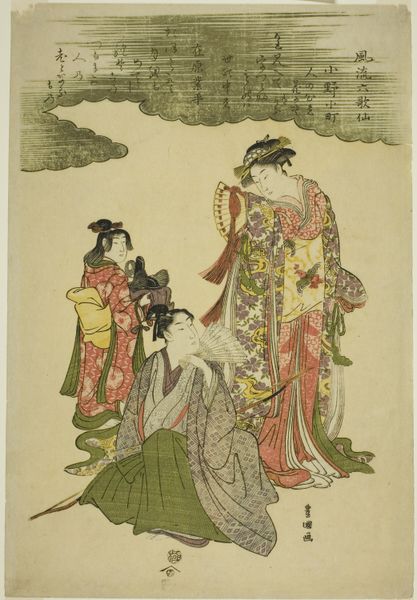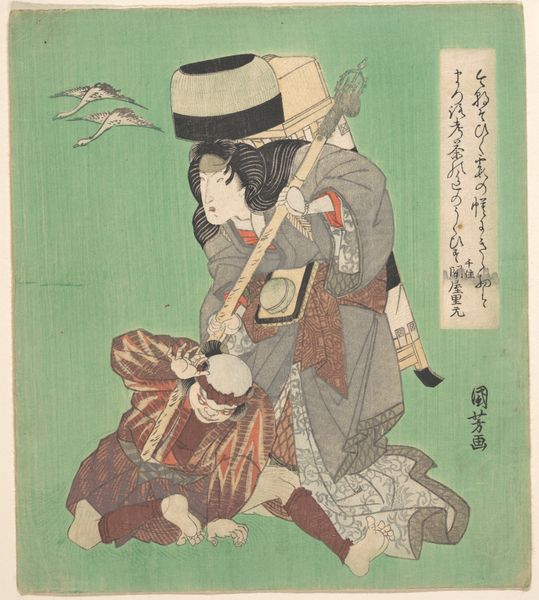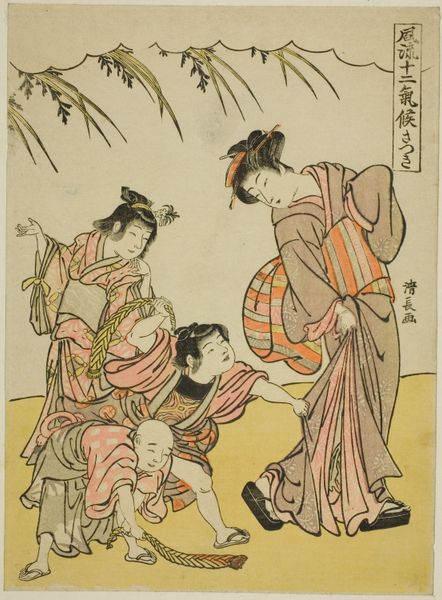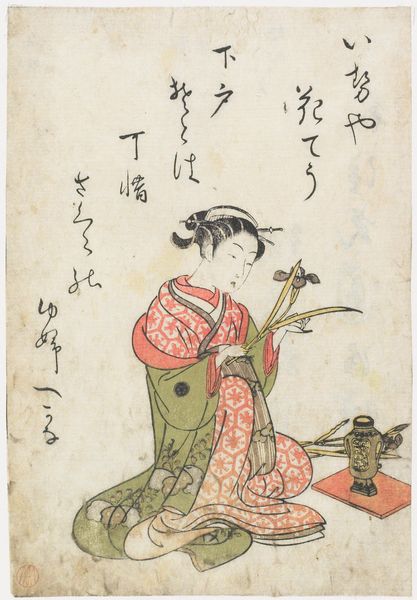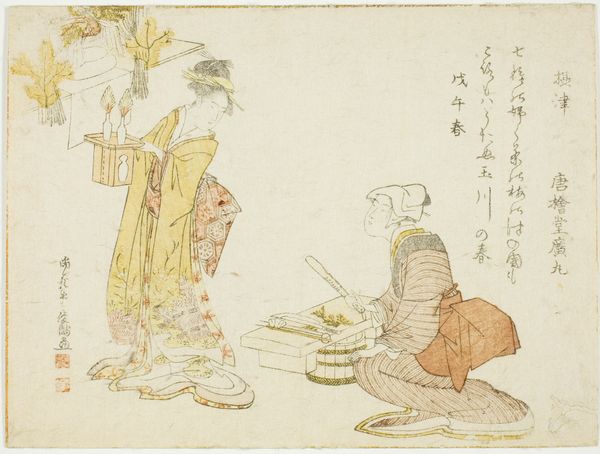
The Jewel River at Ide (Ide no Tamagawa), from an untitled series of Six Jewel Rivers c. 1767
0:00
0:00
Dimensions: 28.1 × 20.9 cm (11 × 8 1/4 in.)
Copyright: Public Domain
"The Jewel River at Ide" was created by Suzuki Harunobu, sometime before 1770. It is a woodblock print, a medium that demands careful attention to line and composition. The scene presents three women wading through water. Their downward glances create a sense of intimacy and shared purpose, but the real focal point is their elaborate garments. Notice how the curvilinear patterns contrast with the straight lines of the water's surface, introducing a tension between natural and artificial forms. Harunobu was a master of *ukiyo-e*, and his work often elevated everyday life to an art form. Here, the act of crossing the river is transformed into an elegant performance, underscored by the jewel-like colors and refined details. The flattening of perspective and the emphasis on surface patterns, common in Japanese prints, subtly challenge Western notions of realism, inviting us to see the world not as it is, but as a carefully constructed image. Consider how the print's formal qualities—its lines, colors, and composition—work together to create a world of transient beauty, reflecting the philosophical interest in impermanence.
Comments
No comments
Be the first to comment and join the conversation on the ultimate creative platform.
